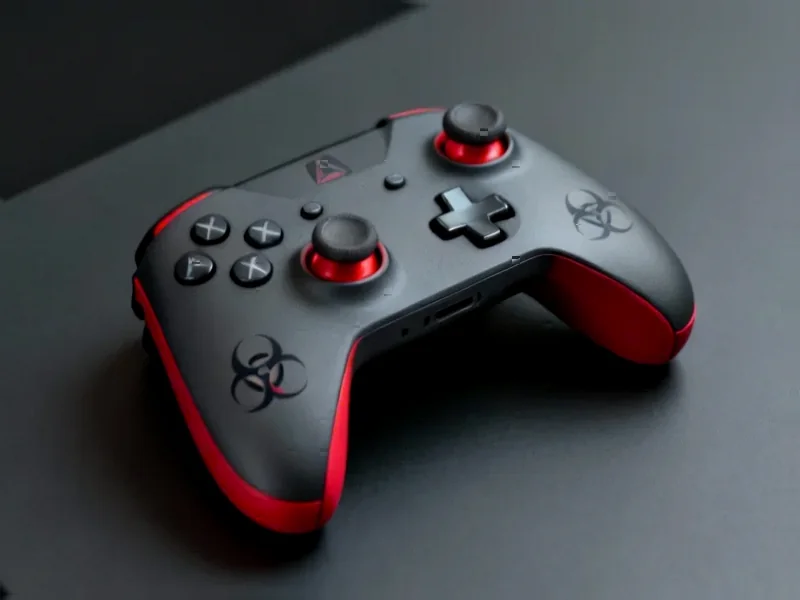According to Forbes, Brynn Putnam sold her interactive fitness company Mirror to Lululemon in 2025 for $500 million after the business generated $150 million in revenue by 2020. Now she’s launching Board, a 24-inch touch-sensitive tabletop gaming console that uses physical pieces instead of controllers and is designed for multiple players to use simultaneously. The platform launches with 11 original games created by designers from hit titles like Diner Dash and Plants vs Zombies, ranging from 60-second mini-games to 45-minute collaborative quests. Board’s advanced piece technology allows unlimited touch recognition and blends physical objects with digital gameplay in what Putnam calls “together-tech” – technology that promotes shared presence rather than personal distraction.
The Big Bet Against Screens
Here’s the thing: Putnam is essentially betting against the entire direction of modern gaming and tech. While everyone else is building more immersive VR headsets, more addictive mobile games, and more isolated digital experiences, she’s going the opposite direction. Board is fundamentally analog in spirit – it’s about getting people to look at each other around a table rather than disappearing into individual screens.
And honestly? That’s either brilliant or completely misguided. The gaming industry has been moving toward networked, solo experiences for decades because that’s where the money is. Couch co-op basically died because it’s harder to monetize. But Putnam seems to be betting that people are hungry for what they’ve lost – those spontaneous, shared moments that used to happen naturally around board games and early console gaming.
The Real Challenge: Will Anyone Care?
Look, building a new hardware platform is incredibly difficult. Even with $500 million in exit money behind you. The graveyard of failed gaming hardware is littered with brilliant ideas that never found an audience. Remember Ouya? Or the countless other “revolutionary” consoles that promised to change everything?
Board faces the classic chicken-and-egg problem: you need great games to sell hardware, but developers won’t make games until there’s an installed base. Launching with just 11 games feels… thin. And while the designers come from respected franchises, will that be enough to convince families to spend what will likely be several hundred dollars on yet another screen?
The timing is interesting though. We’re in this weird post-pandemic moment where everyone acknowledges that screen time has become a problem, but nobody really knows how to fix it. Parents complain about their kids being glued to devices, then hand them another iPad to keep them quiet. Can Board actually break that cycle?
The Family Dynamics Question
Putnam talks about her blended family with five kids ages 2 to 21, and that’s where I get skeptical. Designing something that genuinely works across that age range is nearly impossible. What engages a 2-year-old will bore a 21-year-old to tears. And vice versa.
The early tester quotes about it being “surprisingly emotional” and a “reset button for family time” sound great in a press release. But will that magic last beyond the novelty period? Family game night sounds wonderful in theory, but in reality it often ends with someone storming off or everyone gradually drifting back to their phones.
Still, the unlimited touch recognition and physical pieces could be the secret sauce. There’s something fundamentally different about manipulating real objects versus just tapping a screen. It reminds me of why people still love actual board games despite thousands of digital alternatives.
The Bigger Vision
What’s most interesting to me is Putnam’s mention of creating an ecosystem where others can build on Board. She wants to turn players into designers, especially kids. That’s ambitious – essentially trying to create the App Store for physical-digital hybrid games.
But here’s my question: if this takes off, won’t it just become another screen that kids fight over? Another device that requires updates and maintenance? Another piece of tech that eventually becomes part of the problem it was meant to solve?
Basically, Putnam is trying to have her cake and eat it too – using technology to solve technology’s problems. It’s a noble effort, and given her track record with Mirror, I wouldn’t bet against her. But turning “together-tech” into a sustainable category? That’s going to be much harder than selling fitness mirrors to affluent homeowners.




